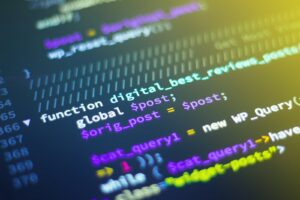Understanding the Role of Regularization in Enhancing Model Performance
Mitigating Overfitting in Machine Learning with Regularization
Regularization techniques in machine learning, such as L1 and L2 regularization, play a critical role in mitigating overfitting, which is a common challenge in developing robust AI models. Overfitting occurs when a model learns the noise and details of the training data to the extent that it performs poorly on new, unseen data. In regions like Saudi Arabia and the UAE, where businesses in cities like Riyadh and Dubai are increasingly relying on AI and machine learning to drive innovation, understanding and applying these techniques can significantly enhance model performance and business outcomes.
L1 and L2 regularization methods are designed to penalize the complexity of a model by adding a regularization term to the loss function, which discourages the model from fitting the training data too closely. For business executives and project managers, particularly in the fast-paced environments of Saudi Arabia and the UAE, employing these techniques can ensure that AI models remain generalizable and reliable across different applications, from finance to healthcare. The key to leveraging regularization effectively lies in understanding how these methods work and their impact on the model’s parameters, enabling businesses to strike the right balance between model complexity and performance.
The application of regularization is not just a technical necessity but also a strategic advantage in today’s competitive markets. By preventing overfitting, businesses can deploy AI models that are better equipped to handle new data and evolving market conditions, ensuring sustained success in their respective industries. In cities like Riyadh and Dubai, where the adoption of AI and machine learning is rapidly increasing, regularization techniques such as L1 and L2 are essential tools for maintaining a competitive edge and achieving business success.
Key Differences Between L1 and L2 Regularization
To effectively utilize regularization in machine learning, it is important to understand the key differences between L1 and L2 regularization, as each method offers unique advantages depending on the specific use case. L1 regularization, also known as Lasso regularization, adds a penalty equal to the absolute value of the magnitude of coefficients to the loss function. This method is particularly effective for feature selection, as it tends to produce sparse models by driving some coefficients to zero, effectively removing less important features. For businesses in Saudi Arabia and the UAE, where the ability to focus on the most relevant features can lead to more efficient and accurate models, L1 regularization offers a powerful tool for optimizing machine learning applications.
On the other hand, L2 regularization, also known as Ridge regularization, adds a penalty equal to the square of the magnitude of coefficients to the loss function. Unlike L1 regularization, L2 does not lead to sparse models; instead, it tends to shrink the coefficients evenly, preventing any one feature from having too much influence on the model. This method is particularly useful in scenarios where all features are potentially important, and the goal is to reduce the impact of noise in the data. In the context of industries in Riyadh and Dubai that rely on detailed and comprehensive datasets, such as finance and retail, L2 regularization can help in developing more stable and reliable models that generalize well across various applications.
Choosing between L1 and L2 regularization depends on the specific needs of the business and the characteristics of the data. For companies in the UAE and Saudi Arabia looking to enhance their AI models, understanding the strengths and limitations of each method is crucial for making informed decisions. L1 regularization is ideal for situations where feature selection is important, while L2 regularization is better suited for scenarios where reducing the overall complexity of the model is the primary goal. By strategically applying these regularization techniques, businesses can develop AI models that are not only accurate but also resilient, capable of driving long-term success in a rapidly changing market environment.
In conclusion, regularization techniques like L1 and L2 are essential tools for mitigating overfitting and enhancing the performance of machine learning models. By understanding the differences between these methods and applying them effectively, businesses in Saudi Arabia, the UAE, Riyadh, and Dubai can develop AI models that are better equipped to handle the challenges of the modern market. This approach not only supports the technical goals of AI-driven projects but also aligns with broader business objectives, ensuring that organizations remain competitive and successful in today’s rapidly evolving landscape.
#Regularization #L1Regularization #L2Regularization #MachineLearning #ArtificialIntelligence #Overfitting #SaudiArabia #UAE #Riyadh #Dubai #BusinessSuccess #ProjectManagement #AI













